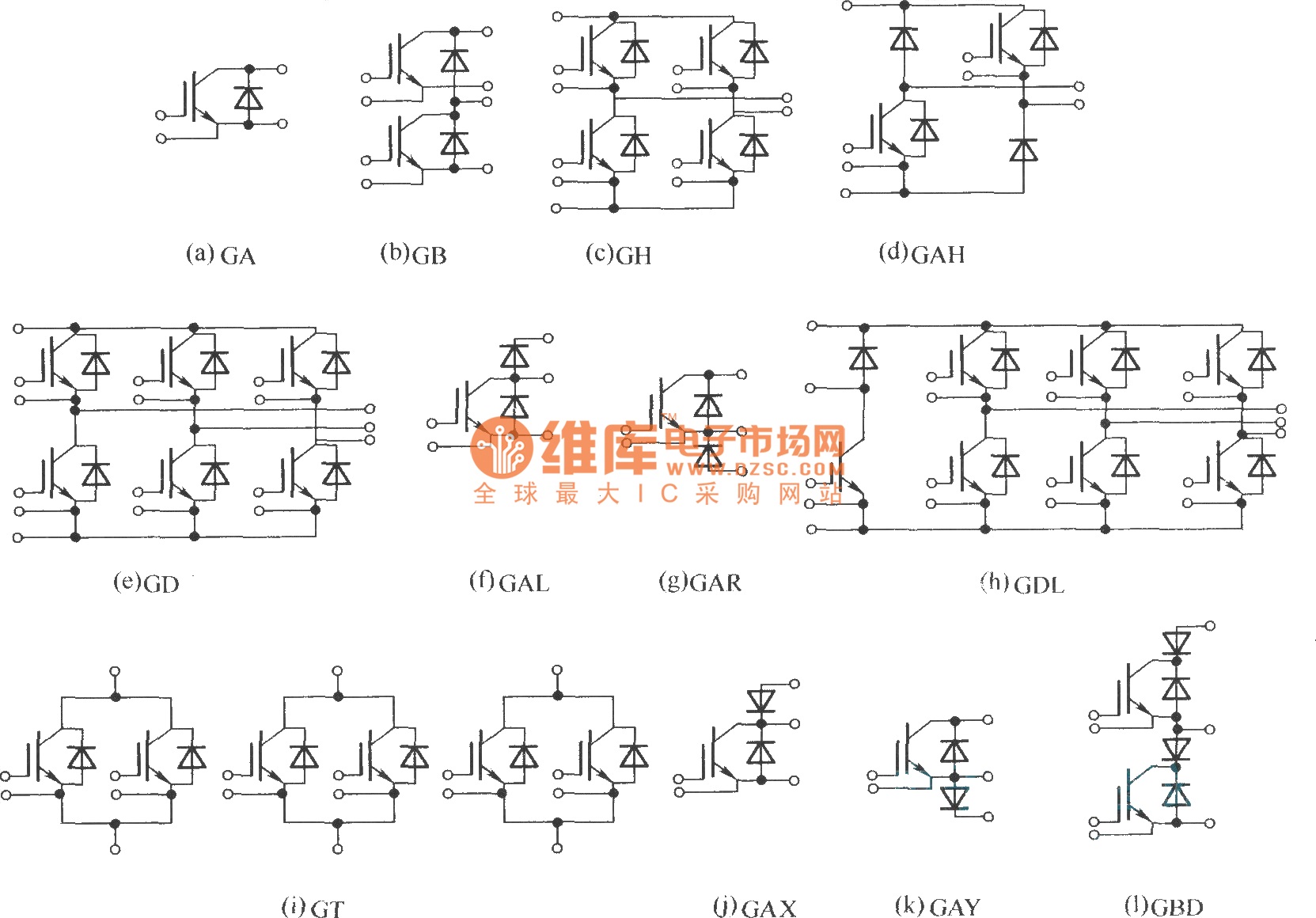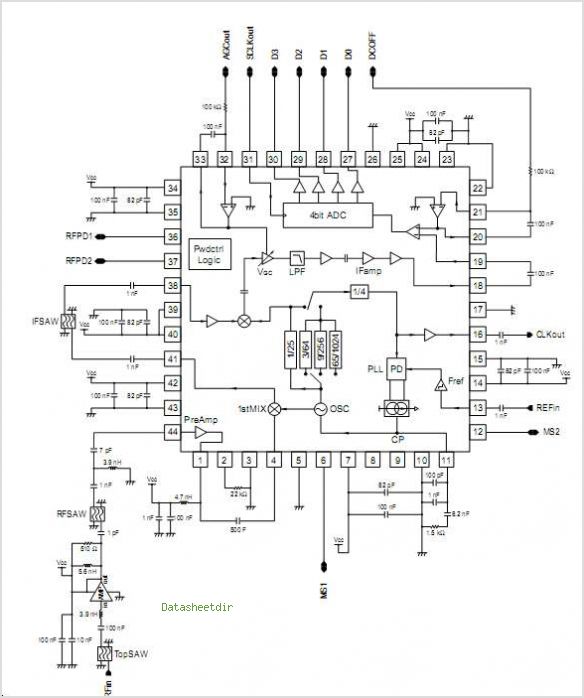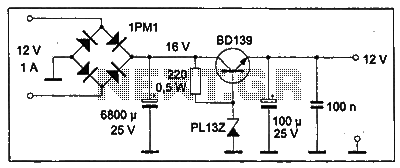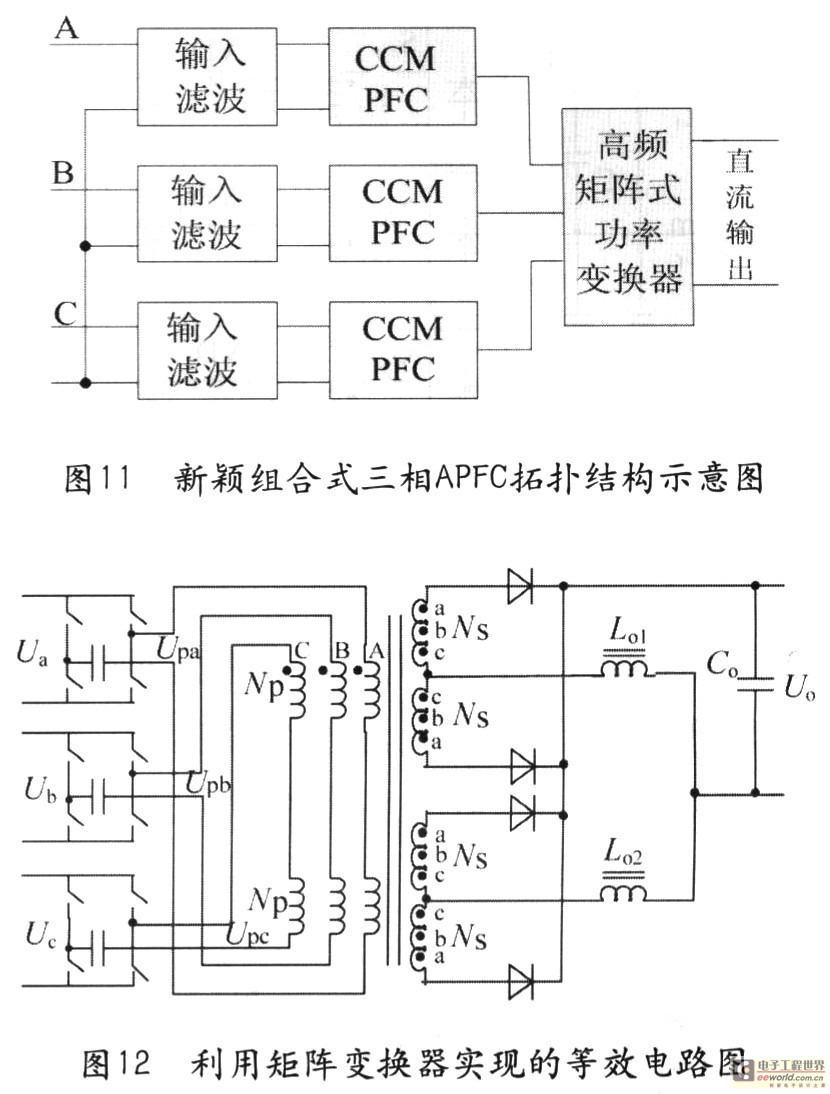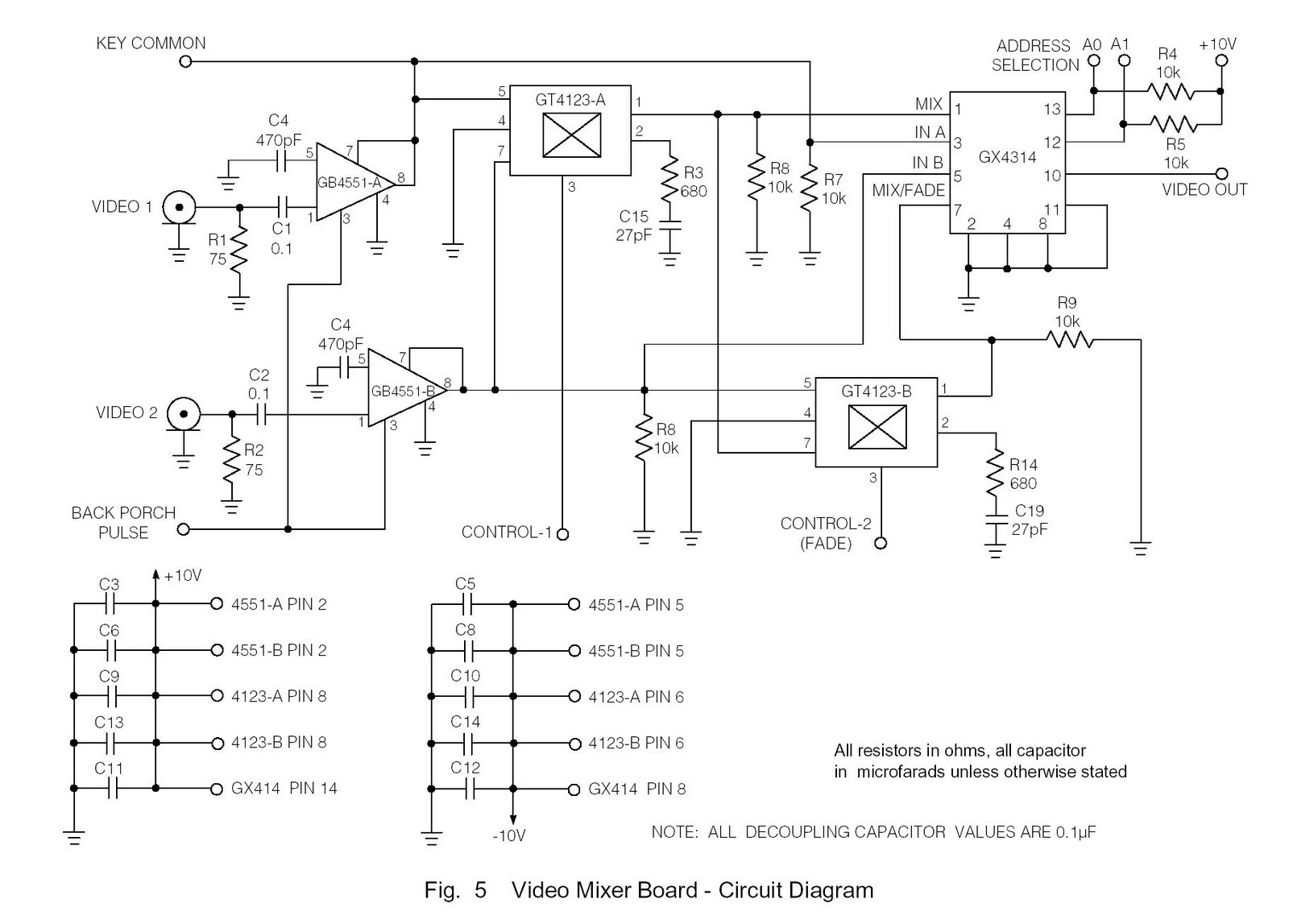
Laser Power Supplies
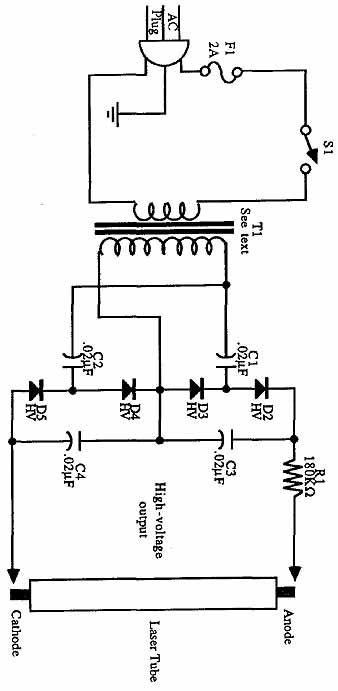
Construct universal power supplies, including low-voltage power supplies for operating electronic equipment. The designs include single- and dual-voltage regulated supplies, an all-purpose adjustable version, and battery pack regulators. A helium-neon laser tube requires a high-voltage power supply for operation.
There are two options for providing the necessary power: purchasing a ready-made laser power supply or building one. Commercially available power supplies for helium-neon lasers can be sourced from various suppliers, which is advisable for beginners. It is essential to ensure that the power supply is rated for the specific tube being used, as some tubes require more operating current than others and may not function correctly with a supply that cannot deliver the required milliamps.
Building a helium-neon laser power supply is not overly complex and does not require numerous components. However, the necessary parts can be challenging to find. The power supply must incorporate high-voltage diodes and capacitors, with higher ratings being preferable. The 1N4007 diode, rated at 1 kV, is the minimum acceptable; however, diodes rated between 3 kV and 10 kV are preferred for lasers consuming more than 5 milliamps. High-voltage capacitors typically used in laser power supplies range from 0.1 to 0.001 µF, and such capacitors can be difficult to locate, as most high-voltage capacitors are in the low picofarad range.
The transformer is a critical component of the laser power supply. An ideal transformer would be custom-designed to meet the specific requirements of the application, but several ready-made step-up switching transformers can also be effectively utilized. The typical transformer for a DC-operated helium-neon laser steps up 12 volts to between 300 and 1,000 volts. High-voltage transformers used in photocopiers, which convert 117 Vac to between 1,000 and 4,000 Vac, are also suitable, as most laser tubes require between 1,200 and 3,000 volts.
Local surplus or electronics outlets may carry appropriate high-voltage diodes, capacitors, and transformers; however, surplus mail-order outlets may offer better availability. It is advisable to consult Section A for a list of mail-order surplus dealers and to request their latest catalogs. If specific components are not listed, contacting them directly may yield additional stock not included in the general distribution catalog. Section A also contains sources for laser components, including Meredith Instruments, MJ Neal Co., Information Unlimited, and General Science and Engineering. These mail-order companies are excellent resources for laser power supply components, and obtaining their catalogs is recommended before undertaking any serious laser project. Many of these suppliers also offer power supply kits with all necessary components pre-packaged.
Extreme caution is required when working with any laser power supply, as they deliver high voltages that can be dangerous or fatal under certain conditions. Proper safety measures should be observed during construction, testing, and operation of these devices.Construct universal power supplies, including: Low-voltage power supplies for operating electronic equipment are in the next section. There you`ll find designs for single- and dual-voltage regulated supplies, including an all-purpose adjustable version and battery pack regulators.
A helium-neon laser tube must be connected to a high-voltage power supply or it won`t work. You have two options to provide the required juice: buy a ready-made laser power supply or build your own. Commercially made power supplies for helium-neon lasers are available from a variety of sources, and if you are just starting out, this is the best route to go.
As detailed in Section 5, you need to be sure that the supply is rated for the tube you are using. Some tubes require more operating current than others and might not work properly with a power supply that can`t deliver the milliamps. He-Ne laser power supplies you build yourself are not overly complicated and they don`t need lots of parts.
But the parts they do require can be hard to find. Specifically, the laser power supply must use high-voltage diodes and capacitors ”the higher the rating, the better. The 1N4007 diode is rated at 1 kV, the minimum you can use. Such diodes are bound to burn out when running a laser that consumes more than 5 milliamps, so 3- to 10-ky diodes are preferred.
High-voltage capacitors of the typical values used in laser power supplies ” 0. 1 to 0. 001 F, are even harder to find. Most high-voltage capacitors have very low values, usually in the tens of picofarads. Perhaps the most troublesome component is the transformer. The ideal laser power supply transformer is specially made to conform to the specifications required by the job, but a number of ready-made step-up switching type transformers can effectively be used. The hard part is finding them. The typical transformer for use in a dc-operated helium-neon laser steps up 12 volts to between 300 and 1, 000 volts.
High-voltage transformers designed for use with photocopiers can also be used. These transform 117 Vac to 1, 000 to 4, 000 Vac. Most laser tubes require between 1, 200 and 3, 000 volts. A local surplus or electronics outlet can carry suitable high-voltage diodes, capacitors, and transformers, but you might have better luck trying surplus mail-order outlets. See Section A for a list of mail-order surplus dealers. Ask for their latest catalog, and if you don`t see the items you want, write or call. Some outlets carry stock that isn`t included in the general distribution catalog. Section A also lists several sources for laser components. These include Meredith Instruments, MJ Neal Co. Information Unlimited, and General Science and Engineering. These mail-order companies are prime sources of laser power supply components, and you should obtain their catalogs before beginning any serious laser project.
Many also offer power supply kits, with all the parts conveniently pre-packaged for you. In fact, one of the dc power supplies discussed below is available (at the time of this writing) in kit form from General Science and Engineering. In the event that the kit`s no longer available, you can still construct the power supply using the schematic and parts list, provided in this section.
* Any laser power supply delivers high voltages that, under certain circumstances, can injure or kill you. Use extreme caution when building, testing, and using these power s 🔗 External reference
There are two options for providing the necessary power: purchasing a ready-made laser power supply or building one. Commercially available power supplies for helium-neon lasers can be sourced from various suppliers, which is advisable for beginners. It is essential to ensure that the power supply is rated for the specific tube being used, as some tubes require more operating current than others and may not function correctly with a supply that cannot deliver the required milliamps.
Building a helium-neon laser power supply is not overly complex and does not require numerous components. However, the necessary parts can be challenging to find. The power supply must incorporate high-voltage diodes and capacitors, with higher ratings being preferable. The 1N4007 diode, rated at 1 kV, is the minimum acceptable; however, diodes rated between 3 kV and 10 kV are preferred for lasers consuming more than 5 milliamps. High-voltage capacitors typically used in laser power supplies range from 0.1 to 0.001 µF, and such capacitors can be difficult to locate, as most high-voltage capacitors are in the low picofarad range.
The transformer is a critical component of the laser power supply. An ideal transformer would be custom-designed to meet the specific requirements of the application, but several ready-made step-up switching transformers can also be effectively utilized. The typical transformer for a DC-operated helium-neon laser steps up 12 volts to between 300 and 1,000 volts. High-voltage transformers used in photocopiers, which convert 117 Vac to between 1,000 and 4,000 Vac, are also suitable, as most laser tubes require between 1,200 and 3,000 volts.
Local surplus or electronics outlets may carry appropriate high-voltage diodes, capacitors, and transformers; however, surplus mail-order outlets may offer better availability. It is advisable to consult Section A for a list of mail-order surplus dealers and to request their latest catalogs. If specific components are not listed, contacting them directly may yield additional stock not included in the general distribution catalog. Section A also contains sources for laser components, including Meredith Instruments, MJ Neal Co., Information Unlimited, and General Science and Engineering. These mail-order companies are excellent resources for laser power supply components, and obtaining their catalogs is recommended before undertaking any serious laser project. Many of these suppliers also offer power supply kits with all necessary components pre-packaged.
Extreme caution is required when working with any laser power supply, as they deliver high voltages that can be dangerous or fatal under certain conditions. Proper safety measures should be observed during construction, testing, and operation of these devices.Construct universal power supplies, including: Low-voltage power supplies for operating electronic equipment are in the next section. There you`ll find designs for single- and dual-voltage regulated supplies, including an all-purpose adjustable version and battery pack regulators.
A helium-neon laser tube must be connected to a high-voltage power supply or it won`t work. You have two options to provide the required juice: buy a ready-made laser power supply or build your own. Commercially made power supplies for helium-neon lasers are available from a variety of sources, and if you are just starting out, this is the best route to go.
As detailed in Section 5, you need to be sure that the supply is rated for the tube you are using. Some tubes require more operating current than others and might not work properly with a power supply that can`t deliver the milliamps. He-Ne laser power supplies you build yourself are not overly complicated and they don`t need lots of parts.
But the parts they do require can be hard to find. Specifically, the laser power supply must use high-voltage diodes and capacitors ”the higher the rating, the better. The 1N4007 diode is rated at 1 kV, the minimum you can use. Such diodes are bound to burn out when running a laser that consumes more than 5 milliamps, so 3- to 10-ky diodes are preferred.
High-voltage capacitors of the typical values used in laser power supplies ” 0. 1 to 0. 001 F, are even harder to find. Most high-voltage capacitors have very low values, usually in the tens of picofarads. Perhaps the most troublesome component is the transformer. The ideal laser power supply transformer is specially made to conform to the specifications required by the job, but a number of ready-made step-up switching type transformers can effectively be used. The hard part is finding them. The typical transformer for use in a dc-operated helium-neon laser steps up 12 volts to between 300 and 1, 000 volts.
High-voltage transformers designed for use with photocopiers can also be used. These transform 117 Vac to 1, 000 to 4, 000 Vac. Most laser tubes require between 1, 200 and 3, 000 volts. A local surplus or electronics outlet can carry suitable high-voltage diodes, capacitors, and transformers, but you might have better luck trying surplus mail-order outlets. See Section A for a list of mail-order surplus dealers. Ask for their latest catalog, and if you don`t see the items you want, write or call. Some outlets carry stock that isn`t included in the general distribution catalog. Section A also lists several sources for laser components. These include Meredith Instruments, MJ Neal Co. Information Unlimited, and General Science and Engineering. These mail-order companies are prime sources of laser power supply components, and you should obtain their catalogs before beginning any serious laser project.
Many also offer power supply kits, with all the parts conveniently pre-packaged for you. In fact, one of the dc power supplies discussed below is available (at the time of this writing) in kit form from General Science and Engineering. In the event that the kit`s no longer available, you can still construct the power supply using the schematic and parts list, provided in this section.
* Any laser power supply delivers high voltages that, under certain circumstances, can injure or kill you. Use extreme caution when building, testing, and using these power s 🔗 External reference

